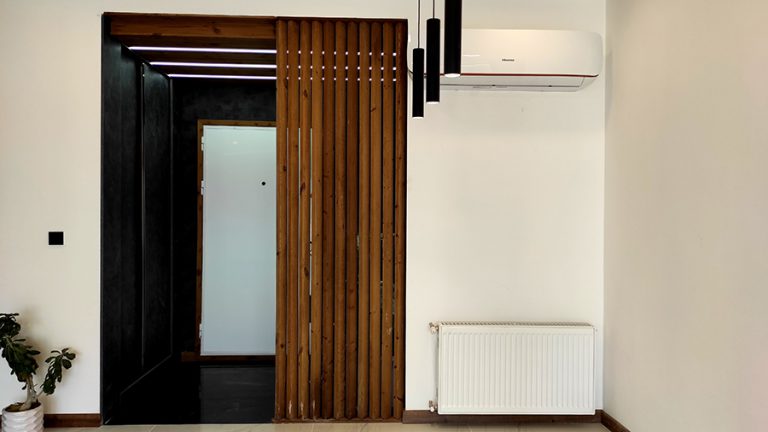نوع مقاله : مقالۀ پژوهشی
نویسندگان
- پدرام حصاری 1
- مهدی زندیه 2
- فرهاد چگنی 3
1 استادیار و عضو هیئت علمی دانشکدۀ فنی و مهندسی دانشگاه تربت حیدریه، ایران.
2 دانشیار و عضو هیئت علمی دانشکدۀ معماری و شهرسازی دانشگاه بینالمللی امام خمینی(ره)، قزوین، ایران.
3 کارشناسارشد معماری، دانشگاه جندیشاپور، دزفول، ایران.

باغ نظر (ماهنامه)
دوره 18، شماره 102
آذر 1400
صفحه 38-25
بیان مسئله: بیهویتی و عدم تعلق به مکان در کنار عدم توجه به تاریخ، طبیعت و اقلیم، معماری را با مشکلات عدیدهای روبهرو کرده است که باید برای حل این مشکل چارهای پیدا کرد. یکی از راههای بهبود شرایط معماری شناخت معماری بومی هر منطقه و الگوهای شکلگرفته و بهکار رفته در معماری بومی آن منطقه است. معماری بومی هر منطقه، گواه بر پیشینة معماری و ارزش فرهنگی آن منطقه و شهر است و تلاش در جهت شناسایی و معرفی الگوهای معماری آن منطقه به همگان، میتواند زمینهای برای مرتفع ساختن بسیاری از نیازهای فرهنگی، اجتماعی و توسعهای معماری باشد. در محدودة جغرافیای ایران، مناطقی وجود دارند که با وجود سابقة غنی در معماری و دارا بودن بناهای ارزشمند، به خوبی شناخته و معرفی نشدهاند. شهر بروجرد در استان لرستان یکی از این مناطق است.
هدف پژوهش: هدف از انجام این پژوهش شناسایی و دستهبندی کردن عوامل کالبدی- فضایی بهکاررفته در بناهای بومی محلة صوفیان شهر بروجرد و ارزیابی تأثیرگذاری آنها در بناهای بومی است.
روش پژوهش: روش انجام پژوهش به صورت ترکیبی و در دو مرحله است. در مرحلة اول برای بهدستآوردن الگوهای کالبدی-فضایی از روش تحلیلی-توصیفی استفاده شده است. در مرحلة دوم و پس از شناخت و برای ارزیابی الگوها از روش تاپسیس استفاده میشود. همچنین ابزار مورد استفاده در این پژوهش اسناد و منابع کتابخانهای، مشاهدات میدانی و پرسشنامه است.
نتیجهگیری: این پژوهش ابتدا به دنبال مشخص کردن الگوهای کالبدی فضایی بهکاررفته در مسکن بومی محلة صوفیان که شامل عناصر سازندة فضایی، تزیینات بهکاررفته در بناهای بومی، مواد و مصالح سازندة قسمتهای مختلف بنا و تأثیرات اقلیمی است و در نهایت با استفاده از ابزار پرسشنامه و روش تاپسیس مشخص میشود شاخصترین الگوی کالبدی فضایی مسکن بومی محلة صوفیان بروجرد، مواد و مصالح سازندة بناها و تکنیک ساخت است.
Evaluation of Effective Physical-Spatial Patterns in Creation of the Vernacular Housing Texture of Sufian Neighborhood in Boroujerd, Iran
نویسندگان [English]
- Pedram Hessari 1
- Mahdi Zandieh 2
- Farhad Chegeni 3
Problem statement: Absence of identity, lack of attachment to a place, and ignorance of history, nature, and climate, have created diverse problems for the architecture of different regions. A practical solution to improve the architectural condition is to study the vernacular architecture and the original architectural patterns in every region. The vernacular architecture reemphasizes the valuable architectural and cultural background of that region. In addition, the recognition and introduction of architectural patterns can resolve many cultural, social, and developmental needs in that region. Some places in the geographical area of Iran, despite their rich architectural background and valuable buildings, are less known and studied. Boroujerd city in Lorestan province is one of these areas.
Research objective: This study aims to identify and categorize the physical-spatial factors used in vernacular buildings of the Sufian neighborhood in Boroujerd and to evaluate their impact on vernacular buildings.
Research method: A combination of two research methods was used in two steps in this study. In the first step, the descriptive-analytical method was used to understand the physical-spatial patterns. In the second step, the TOPSIS method was used to evaluate the recognized patterns. Moreover, bibliographic research using related documents and resources, field observations, and questionnaires were used as the research tools.
Conclusion: This study seeks to identify the spatial-physical patterns used in vernacular housing of the Sufian neighborhood. These patterns include spatial building components, decorations, building materials, and climatic features. Finally, using a questionnaire and TOPSIS method, it is determined that the most significant physical-spatial patterns in vernacular housing of the Sufian neighborhood in Boroujerd are the building materials and construction techniques.
Conclusion: The result of this study is the classification of physical-spatial patterns of constructions of buildings in Boroujerd city, which include spatial constituent elements, decorations used in native buildings, building materials of different parts of the building and effects A climate is created in the emergence of indigenous buildings in the Sufi neighborhood of Boroujerd, and finally the most important patterns are identified separately using the TOPSIS method.
ارزیابی الگوهای سازندۀ کالبدی-فضایی تأثیرگذار در بافت مسکن بومی محلۀ صوفیان شهر بروجرد اصل مقاله 1.13 MB
صاحب امتیاز: پژوهشکده هنر، معماری و شهرسازی نظر
مدیر مسئول: دکتر سید امیر منصوری
سردبیر: دکتر احمد پوراحمد
دوره انتشار: ماهنامه
شاپا چاپی: 1735-9635
شاپا الکترونیکی: 2251-7197




















